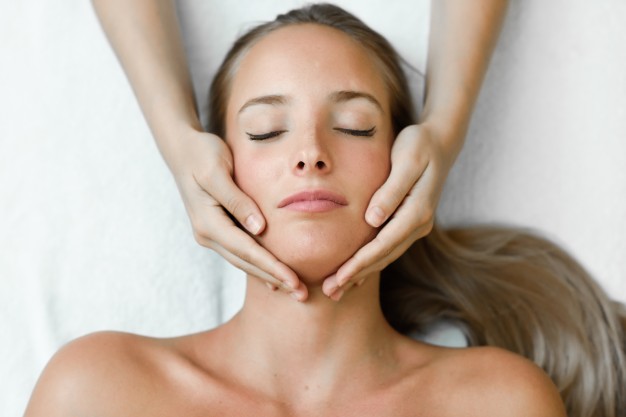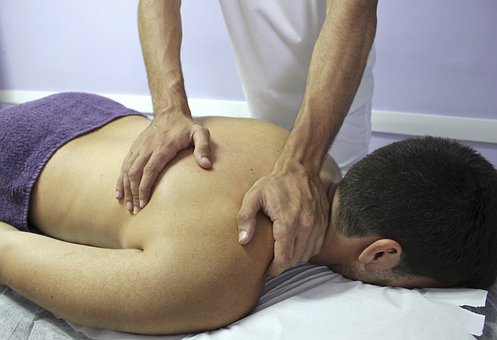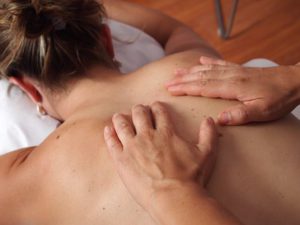Positive effects for the body
 A massage can act on the body in different ways. The skin is stripped of keratinized dead skin flakes. There is improved blood circulation of the skin and the loosening of sebum accumulations. Sweat glands and deeper cells function better. In the skin and the subcutaneous connective tissue chemicals are released that have a vasodilator effect on the vascular system. The regeneration of tissues reduces scar tissue and stretch marks.
A massage can act on the body in different ways. The skin is stripped of keratinized dead skin flakes. There is improved blood circulation of the skin and the loosening of sebum accumulations. Sweat glands and deeper cells function better. In the skin and the subcutaneous connective tissue chemicals are released that have a vasodilator effect on the vascular system. The regeneration of tissues reduces scar tissue and stretch marks.
The circulation of blood and lymph can be disturbed by pressure from the surrounding tissues. This wil diminish the drain of waste. By the massage this pressure is removed and the small capillaries are mechanically drained. This ensures that the cell metabolism restores. By stimulating the lymphatic system the immune system improves. Another reason why the immune system improves, is because of the fact that through massage the parasympathetic part of the nervous system is activated, allowing less cortisol and noradrenaline to be released. These are the hormones that are released during stress and are involved in the fight or flight response. By the reduced cortisol increases the activity of the immune system, and causes a greater resistance to diseases.
Muscles need enough oxygen to function properly. At oxygen starvation lactic acid is accumulated in the muscle tissues, which can lead to muscle fatigue and muscle pain. Massage restores the blood circulation within the muscle, so that the excess lactic acid can be drained, and the muscle is better supplied with oxygen. It helps athletes to recover more quickly, but also prior to intense efforts, as well as during maintenance, massage has a positive influence. It also increases the energy level.
Massage can stimulate pain reduction. Just think of the first gut reaction to rub in pain. This causes a sedative and narcotic effect. In the first place, the receptors in the nervous system are temporarily delayed, and so the pain stimulus does not get delivered so fast to the brain. In addition, thanks to the stimulating effect of the massage, body opiates are released, and by the stimulating effect of the massage on blood circulation, they will be better transported. These opiates have a calming, analgesic effect. In addition, the massage can have a favourable impact on the recovery of the causal factors of the pain. The massage improves the blood flow so that the nutrition of the cells becomes better and more efficient, and at the same time waste substances are better drained.
Positive effects for the spirit
 In addition to the effects on the body, the massage of course also has a beneficial effect on the mind.
In addition to the effects on the body, the massage of course also has a beneficial effect on the mind.
A relaxation of the muscles can replace the inner sense of anxiety and tension by calmness and tranquility. This creates a drop in heart rate and blood pressure, and improved circulation.
Massage also stimulates the production of endorphins and serotonin. Endorphin is the body's natural painkiller. Serotonin is the happiness hormone involved in mood, sleep, appetite, sexual activity and emotion. Serotonin also plays a role in the processing of pain stimuli.
Massage has a pronounced effect on the emotional state of a person. The more tension a person experiences, the stronger the pain perception. So stress can lead to the increase of pain. The massage provides the necessary relaxation causing pain reduction to occur.
A reduced feeling of anxiety and tension, better circulation, less stress, relaxation, calm, peace,... These are all factors that have a positive impact on the function of the body and prevent many small and larger pains from occuring.
Moreover, it is just relaxing and pleasant.
Massage works complementary and should never be seen as a replacement for the physician and medical care.
Contra indications
 There are some contraindications whereby massage is absolutely not recommended. This list is not exhaustive, that's why it is important to mention health complaints.
There are some contraindications whereby massage is absolutely not recommended. This list is not exhaustive, that's why it is important to mention health complaints.
- first 3 months of pregnancy
- inflammation
- unknow pain
- skin infection and open wound
- fever
- infectious skin disease
- fractures
- people with life-threatening illness
- bruises
- Thrombosis and phlebitis
- severe osteoporosis
- infection (abscess)
